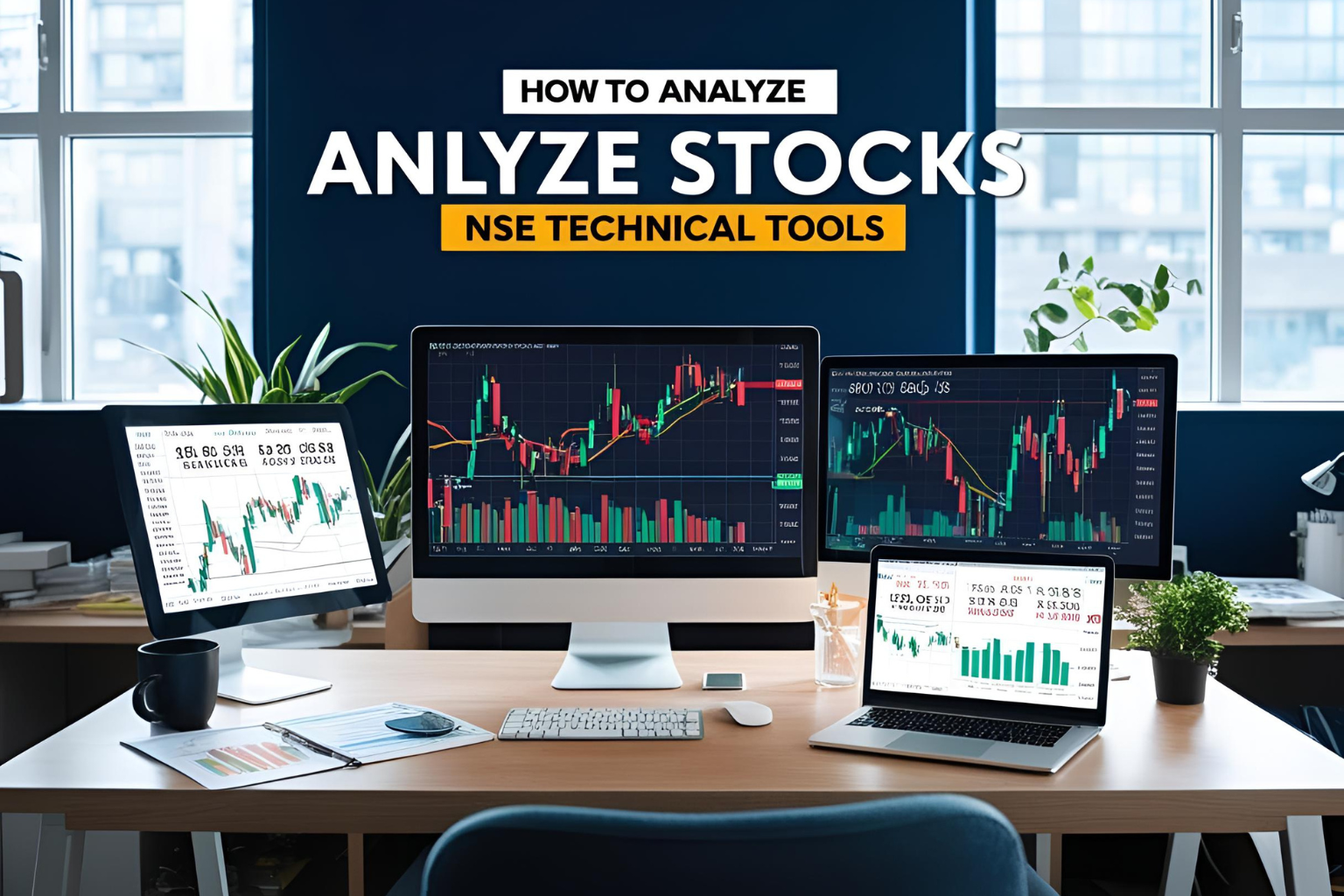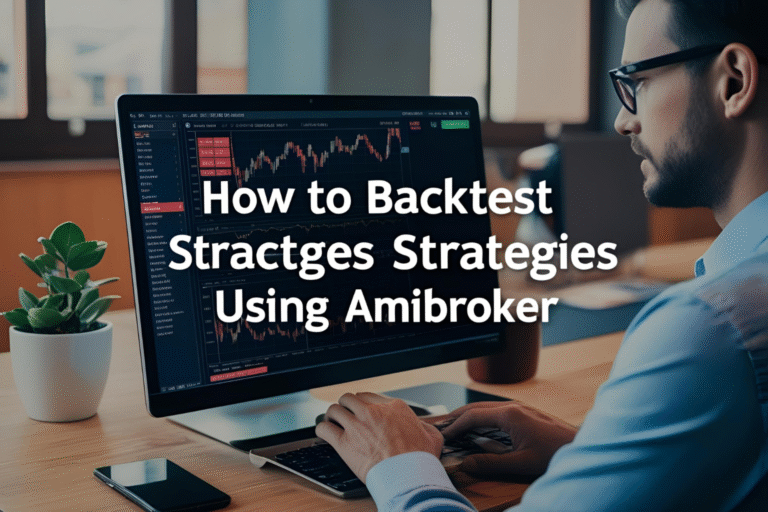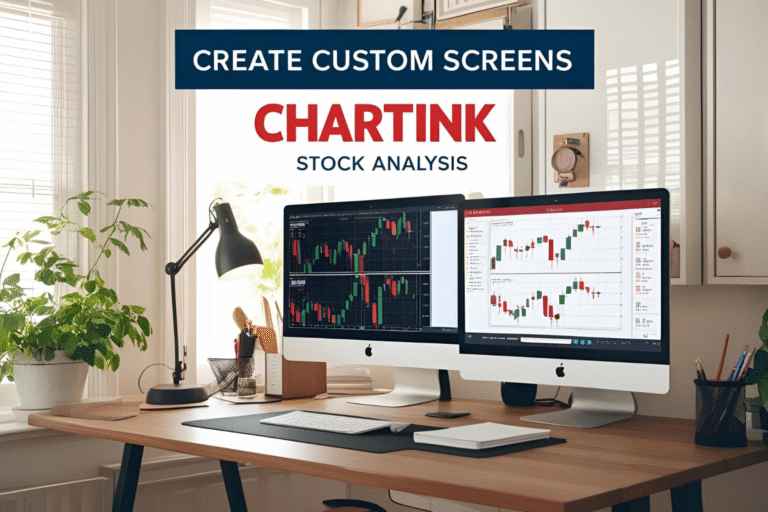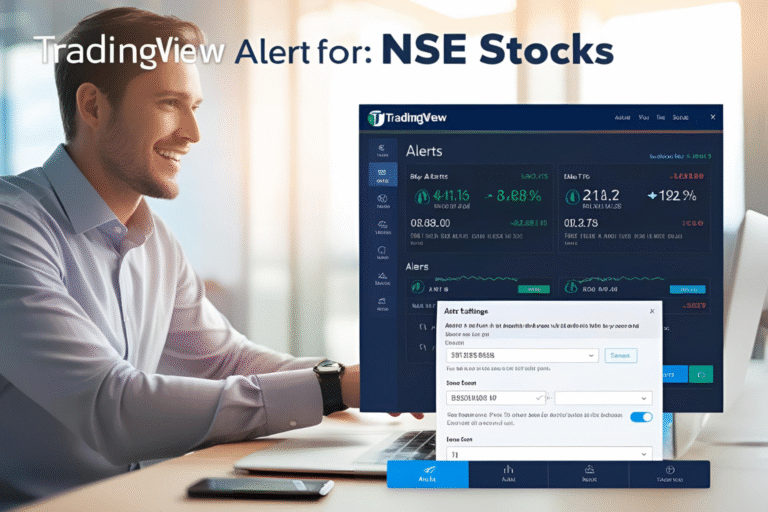How to Analyze Stocks on NSE with Technical Tools
Analyzing stocks on the National Stock Exchange (NSE) is an essential skill for traders and investors in India. With the rise of platforms like TradingView, Chartink, and broker terminals like Zerodha Kite and Fyers One, technical analysis has become more accessible than ever.
In this blog, we break down how to use technical tools effectively to analyze NSE stocks and improve your trading decisions.
Step 1: Choose a Reliable Charting Platform
To begin your analysis, you’ll need a platform that supports NSE stock data and technical indicators.
Recommended Tools:
- TradingView – Advanced charting and indicators
- Chartink – Free NSE screeners with visual charts
- Zerodha Kite / Upstox Pro / Fyers One – Broker-integrated platforms
Make sure the platform provides real-time or near real-time data for intraday or swing trading.
Step 2: Select the Right Timeframe
Your choice of timeframe depends on your trading style:
| Trading Style | Recommended Timeframe |
|---|---|
| Intraday Trading | 1-min, 5-min, 15-min charts |
| Swing Trading | 1-hr, 4-hr, daily |
| Long-Term Investing | Weekly, monthly |
Use multiple timeframes for confirmation (e.g., 15-min + 1-hour combo for swing entries).
Step 3: Use Trend Indicators
Begin by identifying the overall market or stock trend. This helps filter out trades that go against the dominant direction.
Popular Trend Indicators:
- Moving Averages (20, 50, 200 SMA/EMA)
- Supertrend
- MACD
Tip: Use 50 EMA to identify the medium-term trend and Supertrend for entry/exit signals.
Step 4: Apply Momentum Indicators
Once you identify the trend, momentum indicators help validate the strength of that trend or spot reversals.
Popular Momentum Indicators:
- Relative Strength Index (RSI)
- Stochastic Oscillator
- MACD Histogram
Look for:
- RSI > 70: Overbought (possible correction)
- RSI < 30: Oversold (potential buying opportunity)
Step 5: Use Support & Resistance Levels
Plot horizontal lines at recent highs and lows to identify key levels where price may react.
Tools to Use:
- Manual drawing tools in TradingView
- Auto S/R indicators or screeners in Chartink
- Pivot Points for intraday traders
Support and resistance are crucial for:
- Target placement
- Stop-loss decisions
- Breakout/breakdown analysis
Step 6: Analyze Volume
Volume confirms price action. A breakout or trend without supporting volume is weak.
Tools:
- Volume bars under the chart
- VWAP (Volume Weighted Average Price)
- OBV (On-Balance Volume)
Example: If a stock breaks resistance with high volume, it’s a strong bullish sign.
Step 7: Look for Patterns and Setups
Recognizing price patterns can help you anticipate the next move.
Common NSE Patterns:
- Bullish Flags
- Double Bottom / Double Top
- Cup and Handle
- Head and Shoulders
Platforms like TradingView even allow adding pattern-recognition scripts.
Step 8: Combine Indicators for Confirmation
A strong technical setup usually includes:
- Trend alignment (e.g., price above 50 EMA)
- Momentum support (e.g., RSI crossing 50 upward)
- Breakout with volume
Example Setup:
NSE stock is forming a bullish flag above 50 EMA, RSI > 55, volume breakout – potential long entry.
Final Thoughts
Technical tools are only as good as how you use them. Avoid relying on a single indicator or signal. Instead, combine 2–3 tools for confirmation and always manage risk through stop-losses and position sizing.
Practicing on historical charts and backtesting setups will help you build confidence and consistency in analyzing NSE stocks.
FAQs
Q1: Which tool is best for analyzing NSE stocks?
A: TradingView offers the most advanced features, while Chartink is great for screeners.
Q2: Can I analyze NSE stocks using free tools?
A: Yes. Platforms like Chartink and the free version of TradingView are enough for most beginners.
Q3: How do I know if a stock is in an uptrend?
A: Use moving averages (e.g., price above 50 EMA) and check for higher highs and higher lows on the chart.
Q4: What indicators should I avoid overusing?
A: Avoid stacking too many similar indicators (e.g., multiple momentum tools like RSI + Stochastic).
Q5: Can I trade based only on technical analysis?
A: Many traders do. However, combining it with basic fundamentals and market sentiment gives an edge.






